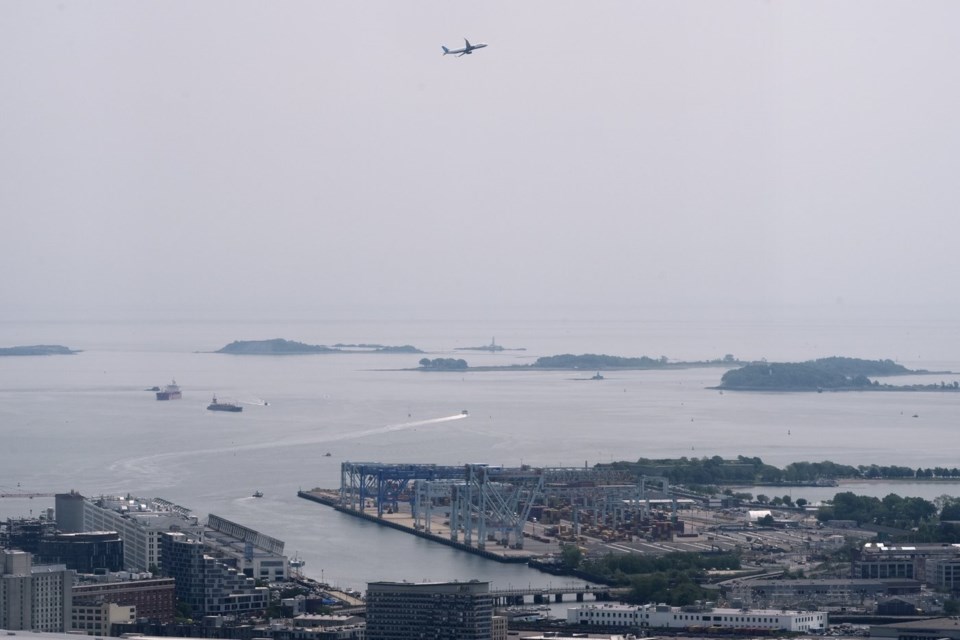Plumes of smoke are blanketing large swaths of the , which presents risks for those breathing it.
The Midwest, Northeast and Great Lakes regions of the U.S. have “very unhealthy” air quality, according to the Environmental Protection Agency, and experts say people should take precautions.
What counts as bad air?
The EPA's Air Quality Index converts all pollutant levels into a single number. The lower the number, the better.
Anything below 50 is classified as “healthy.” Fifty to 100 is “moderate" while 100-150 is unhealthy for “sensitive groups,” and anything above 150 is bad for everyone. The Air Quality Index was around on Wednesday.
Sensitive groups include people with asthma, lung disease or chronic obstructive pulmonary disease, said Dr. Sanjay Sethi, chief of the division of pulmonary, critical care and sleep medicine at the University of Buffalo's medical school.
“If you have heart or lung problems, then you’ve got to be definitely more careful," Sethi said. "I would either avoid going outside or wear an N95 (mask) or at least a dust mask.”
Is my air unhealthy?
Sometimes the air is bad enough to see or smell the smoke. Even if you don't see the pollution, it can be unhealthy to breathe.
The EPA maintains a with up-to-date, regional air quality information. PurpleAir, a company that sells air quality sensors and publishes real-time air quality data, has a citizen scientist, air quality monitoring network with a more of street-by-street air quality readings.
The best way to get indoor air quality readings is to buy a monitor, said Joseph Allen, director of Harvard University's Healthy Buildings Program.
“You can find these low-cost, indoor air quality monitors just about everywhere online now. They don’t cost all that much anymore,” he said.
What if I have to go outside?
For most people, going outside for just a short time won't have a negative long-term impact, said Sethi.
Wearing an N95 mask, which became common during the coronavirus pandemic, will help filter out the pollution.
“N95 is going to get rid of 90-95% of the particles,” said Jennifer Stowell, a research scientist at Boston University’s Center for Climate and Health. “If you have access to a mask that has a respirator-type attachment to it, then that’s the very best.”
If you must be outside and you experience symptoms, experts say you should head indoors or somewhere else with better air quality. Even if you are healthy, it’s good to take precautions.
"If you start wheezing, which is like this whistling sound of the chest, or if you’re feeling short of breath, that’s definitely more concerning,” Sethi said.
How do I make my air cleaner?
Close the windows and turn on the air conditioner, if you have one, setting it to circulate the indoor air. Use blankets to cover cracks that allow outside air into your home, such as under doors.
Finally, swapping the air conditioner's filter for a MERV 13 filter can help, though you should make sure it's installed correctly.
“If you happen to have access to an air purifier, even if it’s just a room air purifier, try to keep it running and in the room that you’re doing most of your activities in,” said Stowell.
___
The Associated Press’ climate and environmental coverage receives financial support from multiple private foundations. AP is solely responsible for all content. Find AP’s for working with philanthropies, a list of supporters and funded coverage areas at .
Caleigh Wells, The Associated Press



